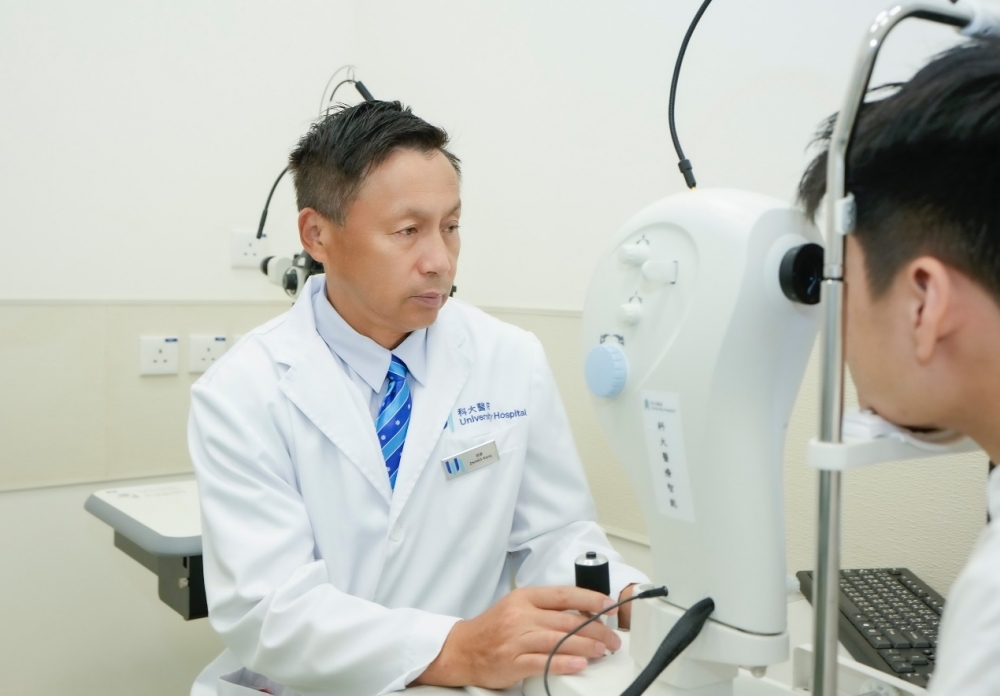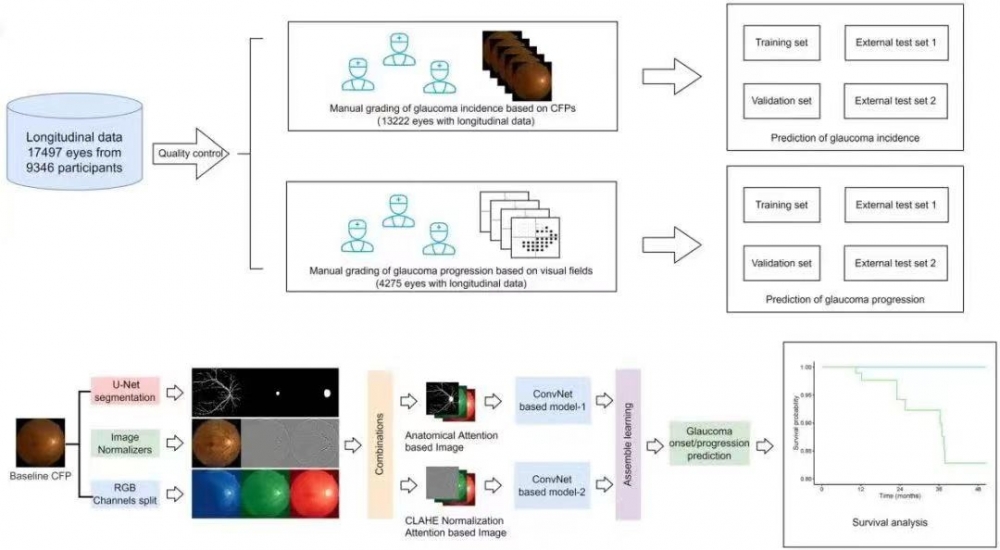Macau University of Science and Technology’s (MUST’s) Dr. Zhang Kang and team develop AI-powered predictive systems for Glaucoma
Glaucoma is a group of optic neuropathies and the global leading cause of irreversible vision loss. In 2020, the Chinese Journal of Ophthalmology reported that 21 million Chinese citizens were diagnosed with glaucoma, with 5.67 million of these cases resulting in vision loss. At a population level, glaucoma accounts for vision loss in every 4 out of 1000 individuals, making it a major public health concern. Due to the asymptomatic nature of early-stage glaucoma, approximately 50% of the patients are not diagnosed until they enter mid-to-late stage. Accurate predictions for risks of disease onset and progression would allow close follow-up and timely interventions to minimize glaucoma-induced damage in visual functions. Schematic diagram of dvelopment and validation of the deep learning system for glaucoma incidence and progression prediction In recent years, artificial intelligence (AI) technology has made impressive progress in the field of glaucoma diagnostics. Dr. Zhang Kang led a collaborative team to successfully develop the world’s first AI-powered predictive system for glaucoma onset and progression, based on retinal photographs. Dr. Zhang’s team from MUST Faculty of Medicine has been recognized as a world leader in big-data AI application in medical healthcare and their research achievements have been prominently featured in esteemed journals incluing Cell, Nature, Nature Medicine, Nature Biomedical Engineering. The latest results on the application of fundus photography in the prediction of glaucoma onset and progression online on June 1, 2022, in the Journal of Clinical Investigation (JCI), adding to their collection of high-quality AI research publications. This is also the first time the world is seeing the simultaneous application of AI in hospital and community-based settings to accurately predict glaucoma disease and progression. The system could detect patients at high risk of disease progression from the an affected patient as well as predict disease onset in normal individuals. Dr. Manson Fok, Dean of MUST Medical School, notes that “The preexisting diagnosis procedures for glaucoma, including intraocular pressure measurements and visual field perimetry tests, are complicated and inconvenient for the patients. This new system avoids the expense and inconvenience of multiple tests and can be applied broadly in clinical settings, both in-person and remotely, for disease screening.” Access Journal of Clinical Investigation link below for more details: 





